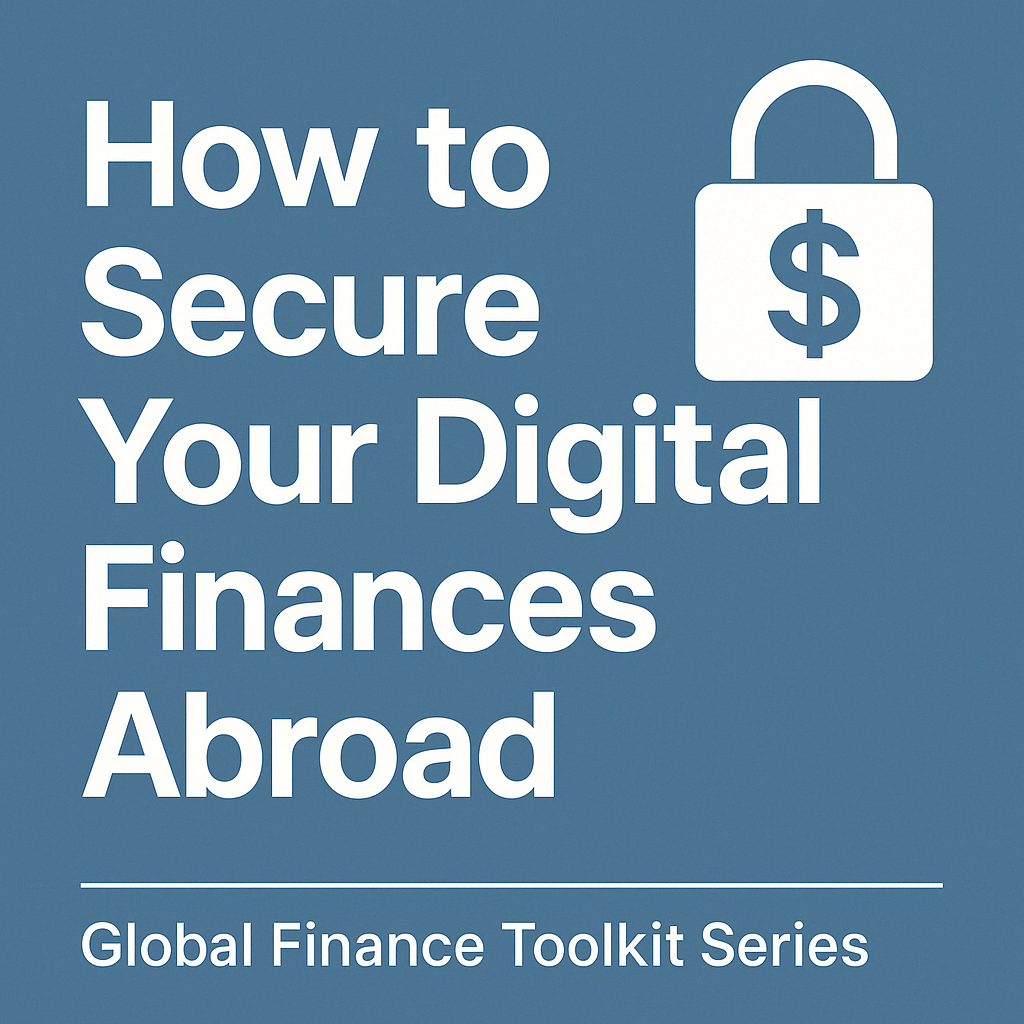How to Secure Your Digital Finances Abroad
A 2025 security guide for protecting your money while living globally
Introduction
Managing money abroad is no longer just about avoiding fees or optimizing currency conversions. In 2025, the greatest threat to your wealth may not be inflation or market volatility — it could be a phishing email or a hacked device.
As global citizens, digital nomads, and remote professionals, we operate across devices, networks, and platforms. That also means we expose ourselves to more digital vulnerabilities.
This guide covers the essential tools, habits, and systems you need to secure your digital finances while living across borders.
1. The Top Threats to Digital Finance
If you’re living internationally, your financial data and systems are exposed in ways locals may not consider:
- Public Wi-Fi risks (coffee shops, airports, co-working spaces)
- SIM swapping attacks
- Phishing emails posing as global banks
- Malware-infected ATMs or POS devices
- Weak password practices across platforms
- Unencrypted banking apps or outdated devices
In a globally connected life, every device you use is a potential entry point for financial theft.
2. Core Principles of Financial Security
- Segmentation: Never keep all your money in one account
- Redundancy: Use backup devices and recovery options
- Minimalism: Fewer tools mean fewer vulnerabilities
- Visibility: Real-time notifications for all transactions
- Encryption: Encrypt files, connections, and devices
Security is not paranoia — it’s design. Your financial system should assume risk, and be prepared to contain it.
3. Tools to Secure Your Digital Finances
2FA (Two-Factor Authentication)
- Enable 2FA on all financial apps
- Use an app-based method (Authy, Google Authenticator)
- Avoid SMS 2FA unless absolutely necessary
- Back up recovery codes offline
Virtual Cards (Revolut, Privacy.com, N26)
- Generate one-time-use cards for online payments
- Limit amount and vendor
- Instantly freeze or delete cards when needed
Password Managers (Bitwarden, 1Password)
- Store strong, unique passwords per account
- Auto-fill on devices with biometric locks
- Secure vault with master password and 2FA
- Monitor for breaches
VPN (ProtonVPN, NordVPN)
- Encrypt your internet traffic
- Avoid geo-blocks on finance apps
- Stay secure on public Wi-Fi networks
- Prevent man-in-the-middle attacks
Secure Cloud Storage (Proton Drive, Tresorit)
- Store backups of documents, IDs, tax files
- Encrypted end-to-end
- Access only on trusted devices
Real-Time Alerts (Wise, Revolut, Monzo)
- Get push notifications for every transaction
- Monitor balance thresholds
- Spot fraud immediately
Device-Level Protection
- Use secure operating systems
- Keep OS and apps up-to-date
- Set device auto-wipe on failed login attempts
- Disable app installations from unknown sources
4. Financial Hygiene Checklist (2025)
| Item | Description |
|---|---|
| Use 2FA | All banking and payment apps |
| Strong passwords | Unique, 16+ characters, no reuse |
| VPN on public Wi-Fi | Always |
| App updates | Enable automatic updates |
| Notifications | Always on for transactions |
| Backups | Store offline and encrypted |
| Physical device security | Laptop lock, phone encryption |
5. Additional Advanced Strategies
- Use multi-currency accounts across providers (Wise + Revolut)
- Keep small working balances in active apps
- Store main reserves in high-security bank accounts
- Use cold wallets for crypto assets
- Consider a burner phone or device for banking only
- Monitor your data with HaveIBeenPwned or Firefox Monitor
Final Thoughts
You don’t need to be paranoid. You just need to design your digital financial life like an engineer would — with layers, backups, and automatic protections.
Rule #6: The more countries you move through, the more bulletproof your digital defenses must be.
Financial freedom means nothing without security.
Build it into the system — before someone else breaks it.
